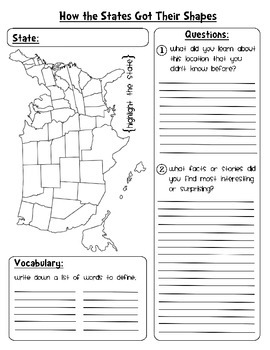

But, as he soon discovered, the United States' neighbors did not. Other than the boundaries provided by the Gulf of Mexico and the Mississippi River, no one knew what its boundaries were! Jefferson believed that all the land comprising the watershed leading to the Missouri and Mississippi rivers constituted the Louisiana Purchase. The vagueness is also the reason very little evidence of the Louisiana Purchase can be found in our state lines. The document conveying France's remaining North American land-a tract that included all or some of Louisiana, Arkansas, Oklahoma, Missouri, Kansas, Iowa, Nebraska, South Dakota, Wyoming, Minnesota, Montana, and Colorado-states that the French Republic cedes to the United States "the Colony or Province of Louisiana with the same extent that it now has." This wording seems refreshingly brief and to the point for a legal document, if a bit vague. It first surfaced on the American map following the 1803 Louisiana Purchase. Probably the most notable American boundary is the long straight line that defines so much of the nation's northern border with Canada. Congress did, however, adopt its underlying principle: All states should be created equal. Congress assigned Thomas Jefferson the task of studying this matter and in 1784 Jefferson issued a report to Congress in which he proposed that the region be divided into states having two degrees of height and four degrees of width, wherever possible.Īs it turned out, Congress didn't employ these borders when it enacted the Northwest Ordinance in 1787, the law that included the boundary lines for the future states to be created from the Northwest Territory.


After the Revolution, Congress had to decide how best to divide this region, known as the Northwest Territory, into states. The division of this land acquired in the French and Indian War influenced virtually every state border that followed. The boundaries of that war are still on the map today, for they provide borders for the states of Ohio, Indiana, Illinois, and Wisconsin. With this victory, England added to her North American possessions all the land between the Ohio River and the Mississippi River. In this war, England and her American colonists began what became the dismantling of France's possessions in North America.

The French and Indian War (1754-63) resulted in the oldest of these multistate boundaries. Many of our state borders are segments of borders that date from England's and, later, the United States' territorial acquisitions, and they can be identified by looking for lines that provide multistate borders.


 0 kommentar(er)
0 kommentar(er)
